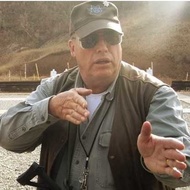28 Apr 17
More on “Readiness”
In making the point about the importance of personal readiness in my last Quip, I didn’t intend to convey the impression that I teach students, during an emergency, to carefully adjust sights, stocks and slings, nor to sling-up, all prior to putting effective fire on threat(s)!
When the rifle is not “ergonomically optimized,” it still remains eminently usable, even with the stock retracted and the sling unused (but stowed in a manner so as to not interfere with weapon functionality).
Aimpoints are never turned off. EOTechs are turned on the instant the rifle is retrieved.
When not under our direct control, rifles are usually best kept in “transport mode” (fully-charged magazine inserted, bolt forward on an empty chamber, hammer forward, manual safety “off”)
With most western-style military rifles, once the weapon has been dry-fired (hammer forward on an empty chamber), the manual safety cannot be returned to the “on” position. This is by design. When the manual safety lever cannot be pushed into the “on” position, that tells the operator there is no live round chambered.
The point is that the rifle, when stored out of sight in a skateboard case, or some other deliberately deceptive manner, still needs to be is an appropriate state of readiness. And we must drill constantly, so that we can quickly retrieve it, and then smoothly put it into action with minimal fumbling/delay.
Once again, in any personal security emergency:
THE FIRST FIVE SECONDS ARE MORE IMPORTANT THAN THE NEXT FIVE HOURS!
All our training revolves around those critical “first five seconds!”
“A man with a watch always knows the time. A man with two watches is never quite sure!”
Anon
/John


